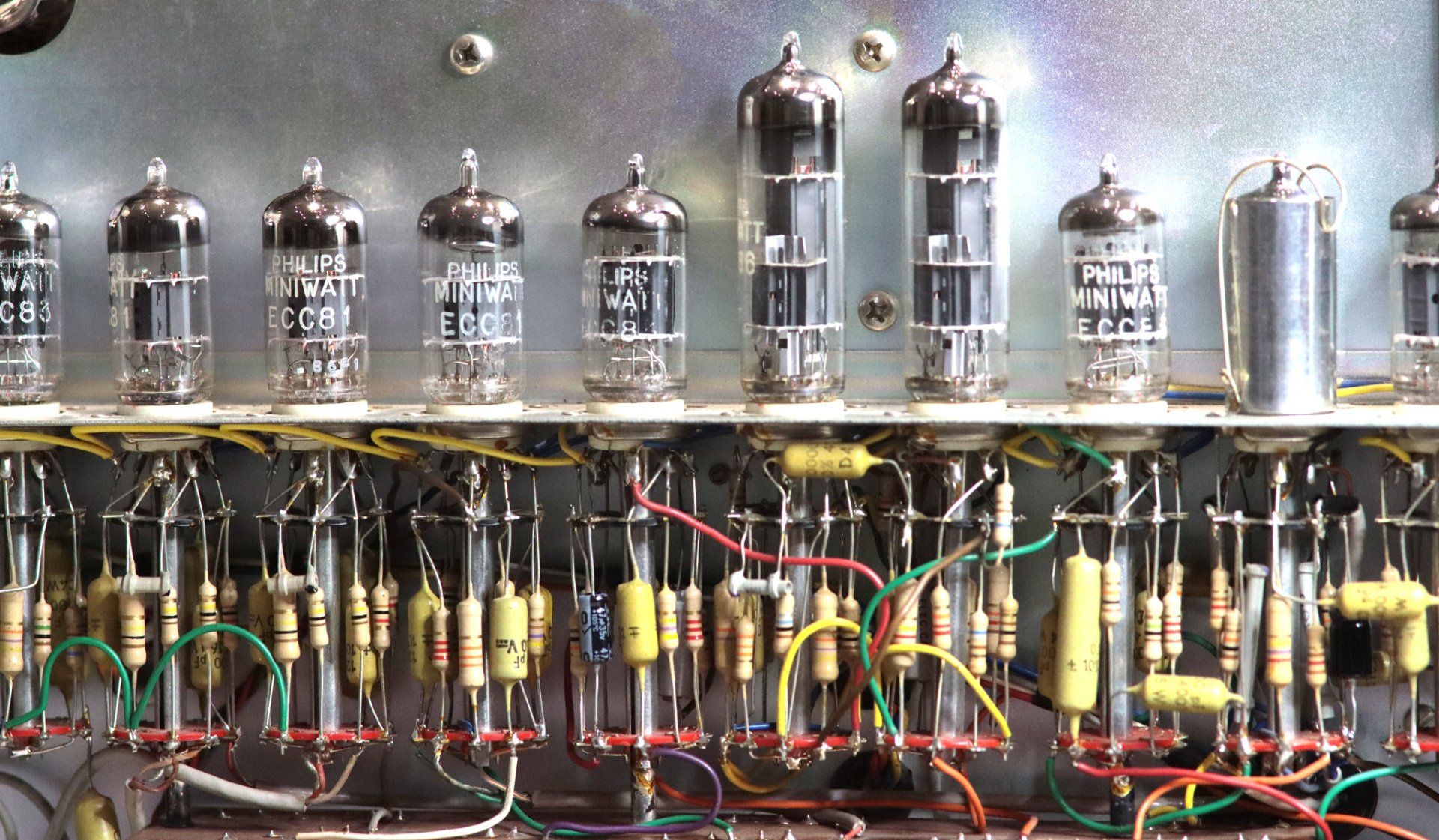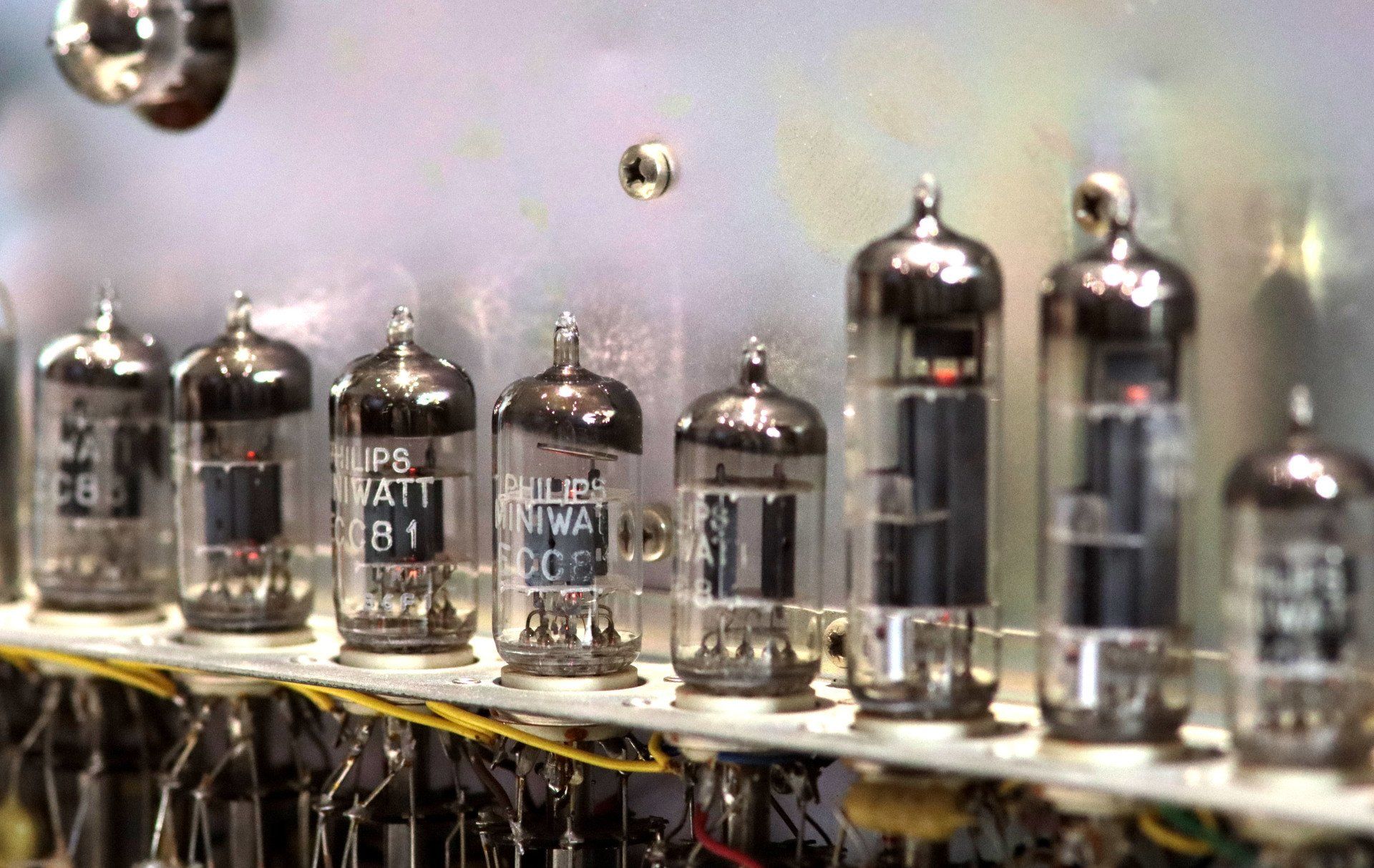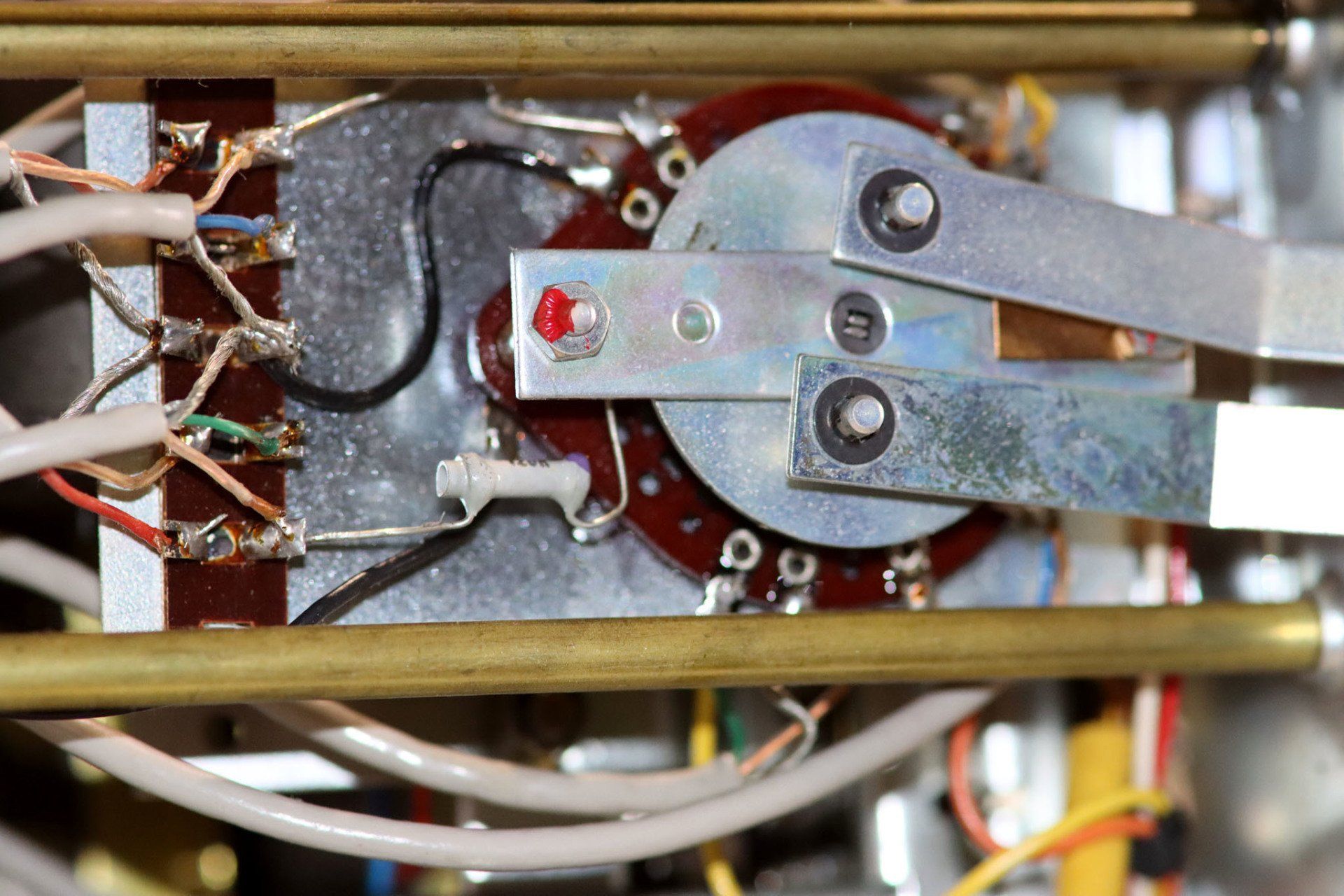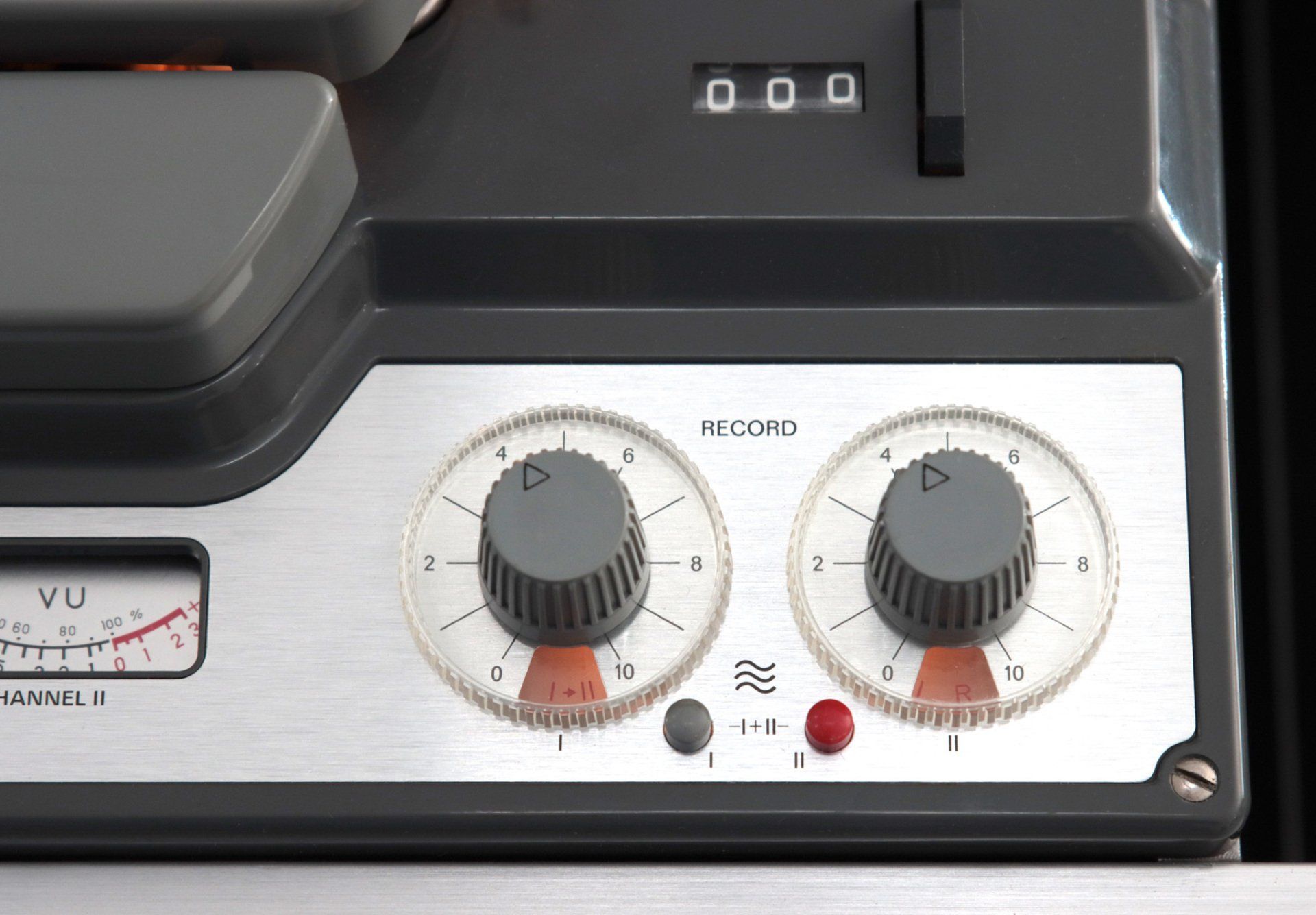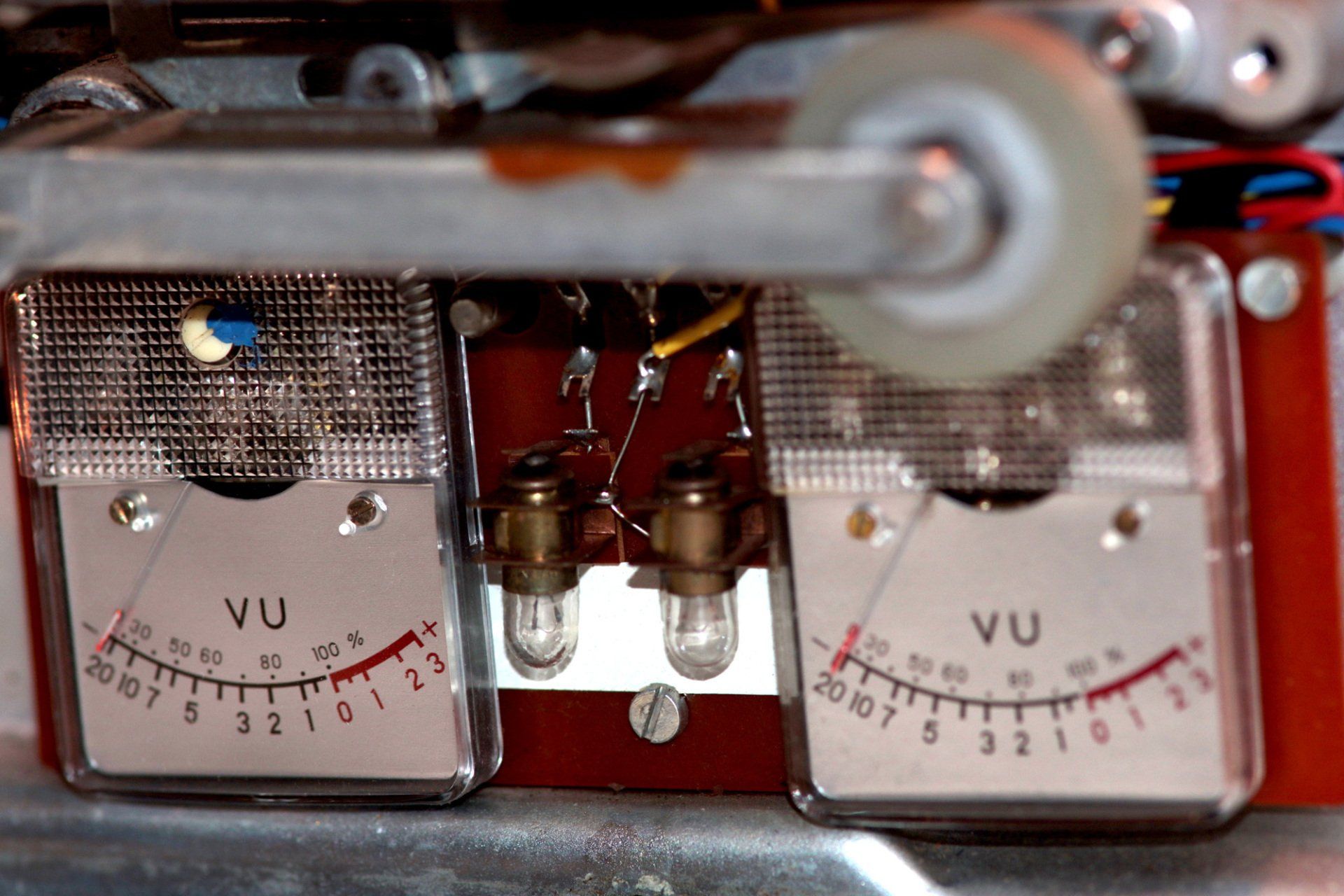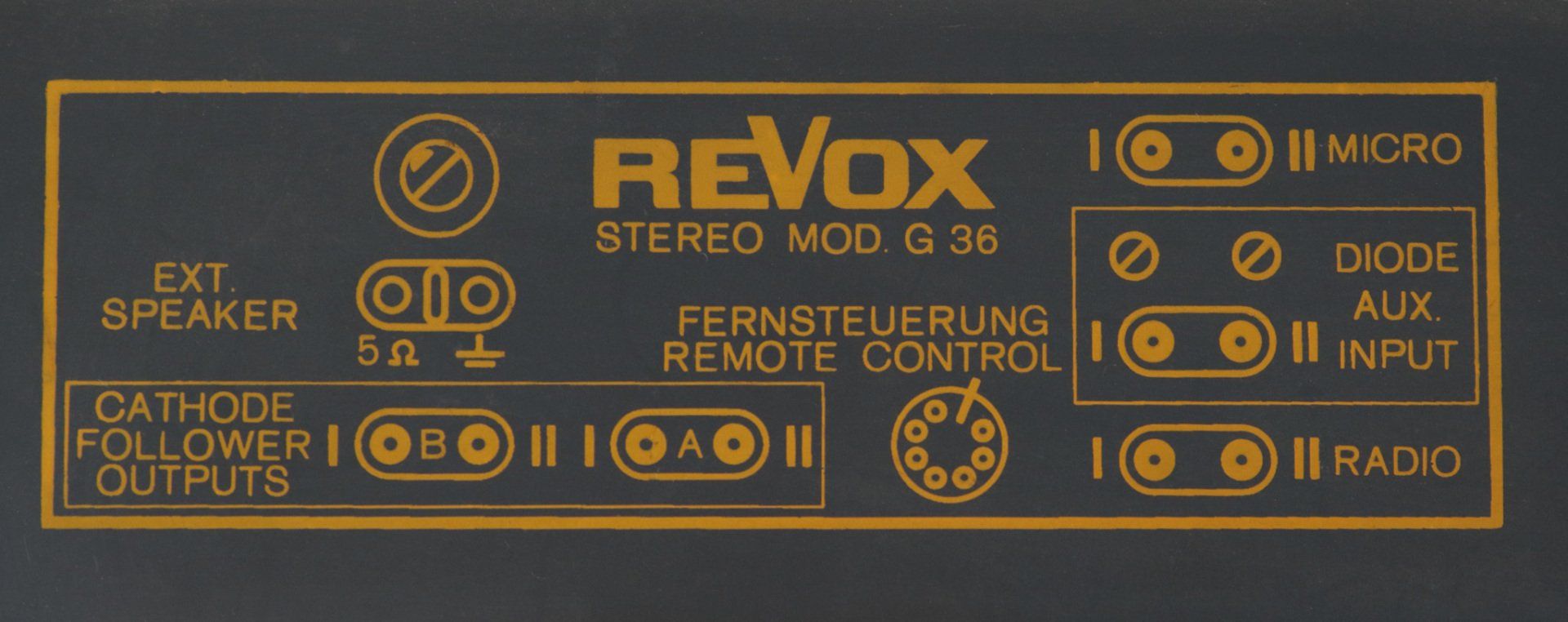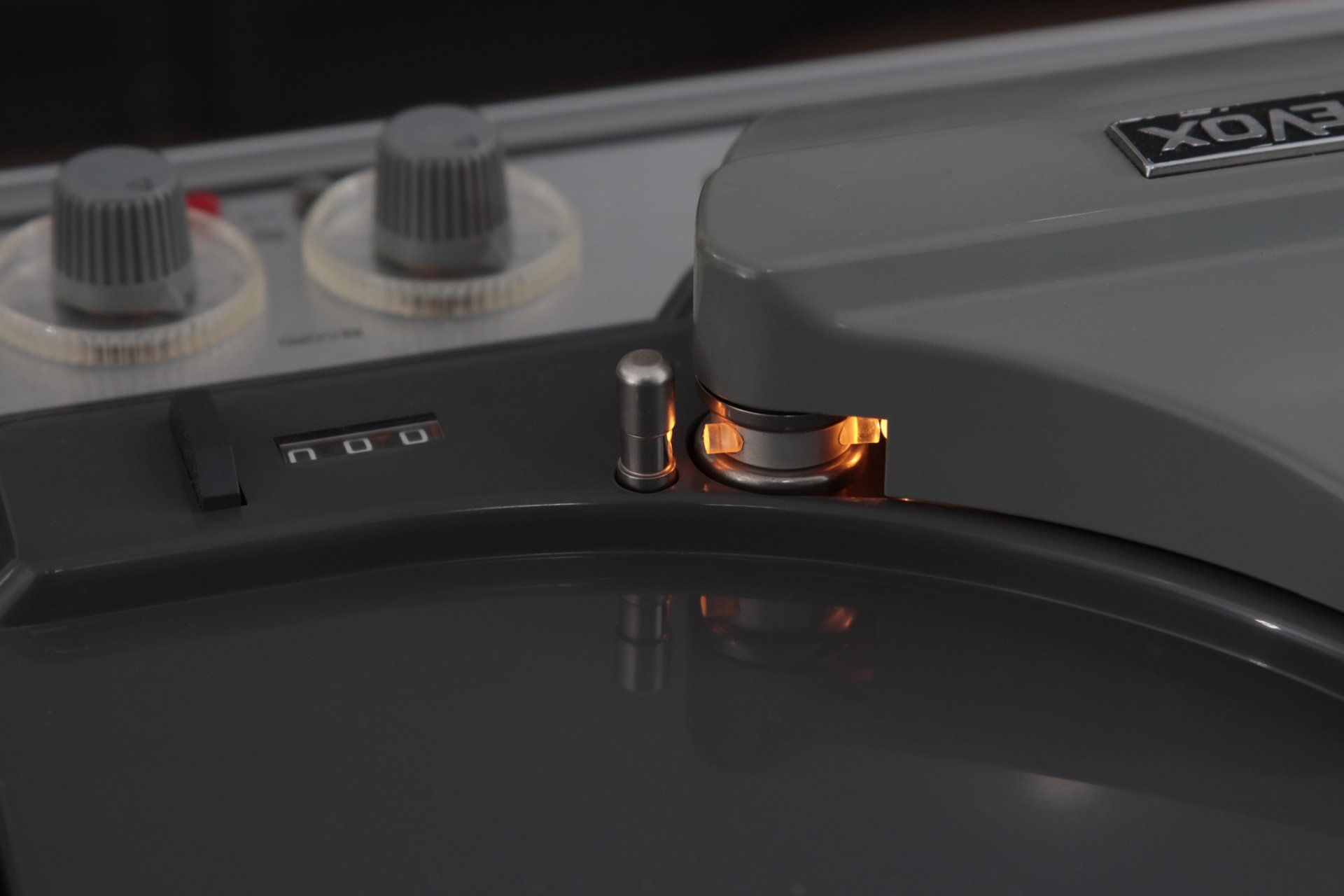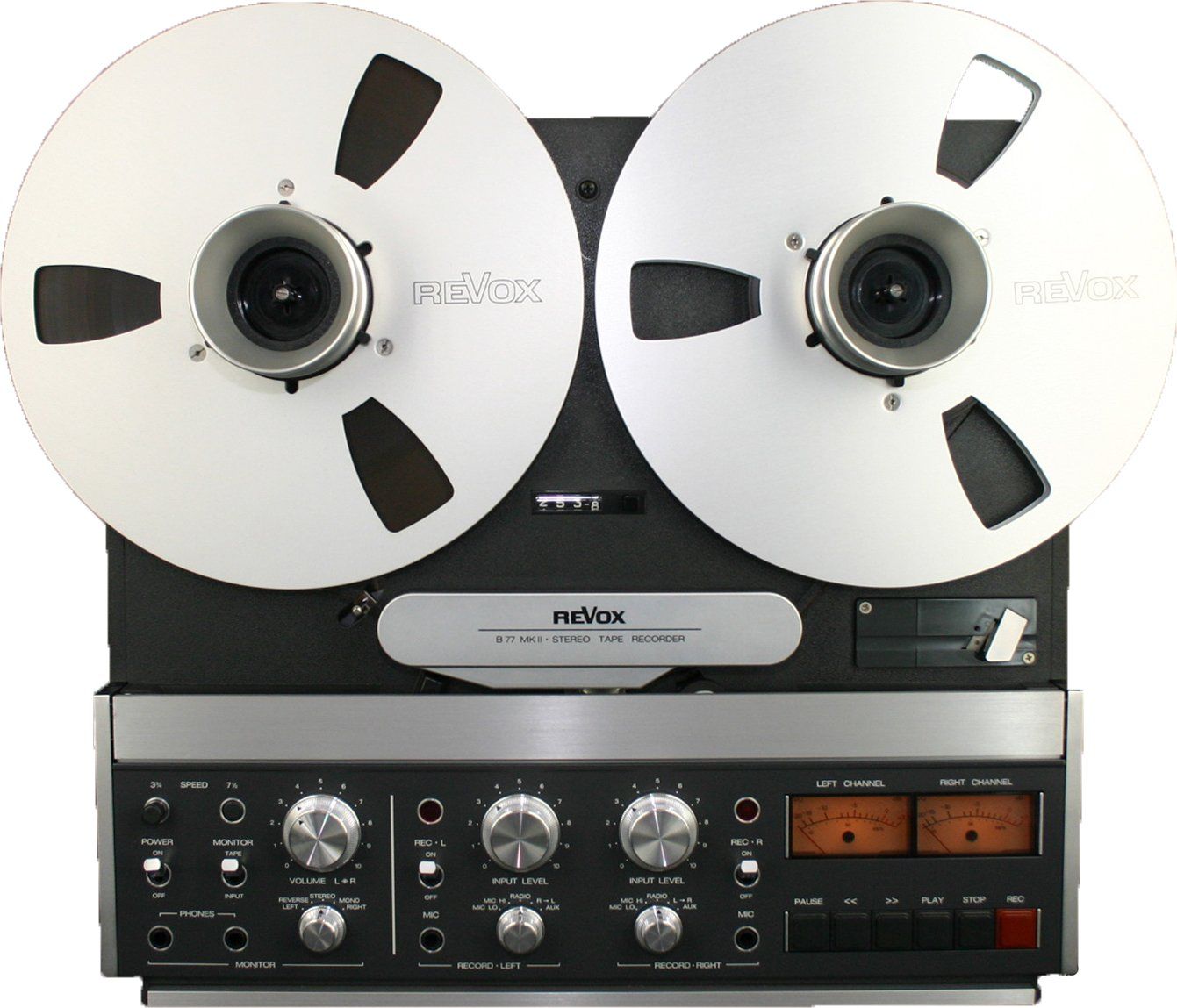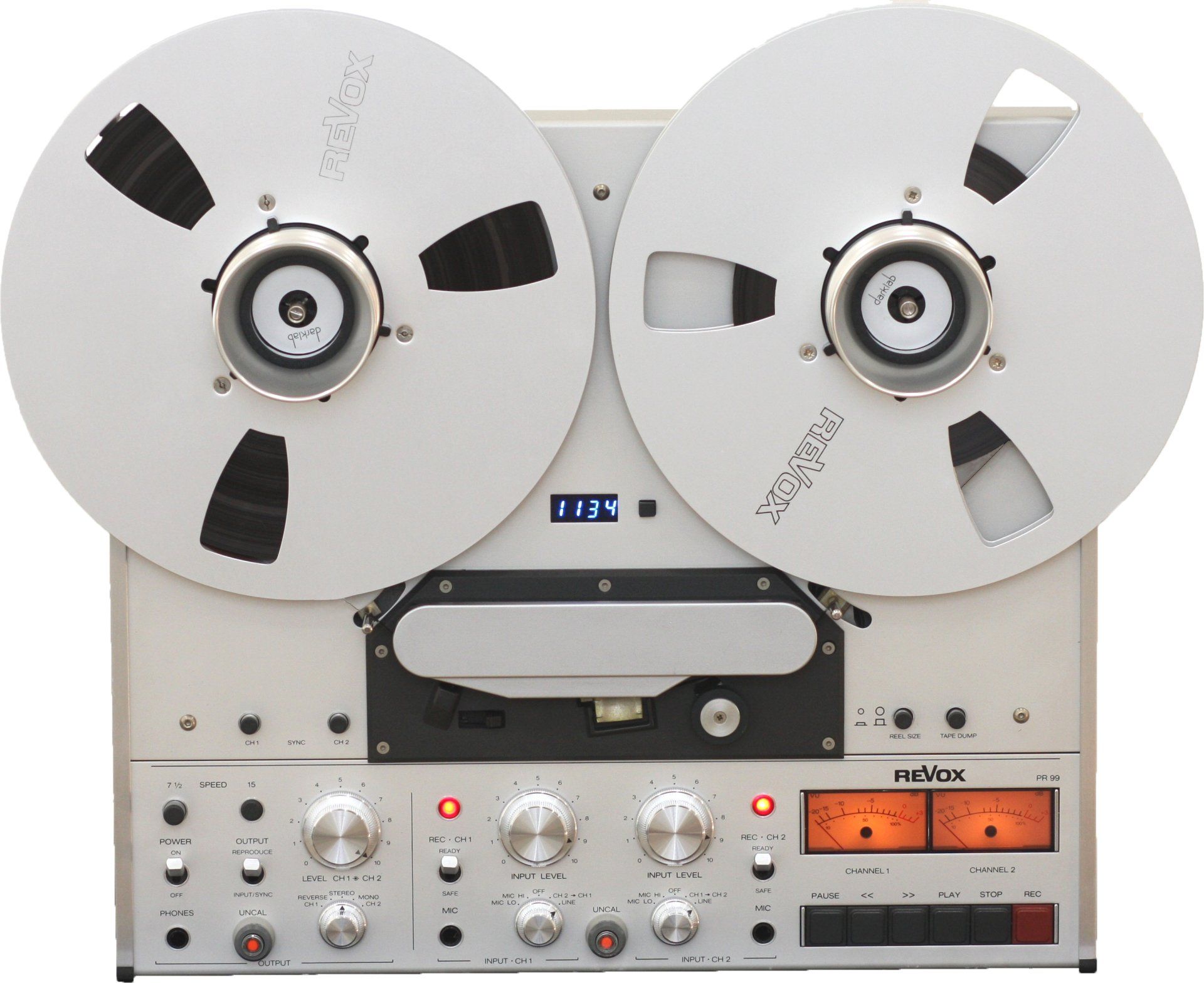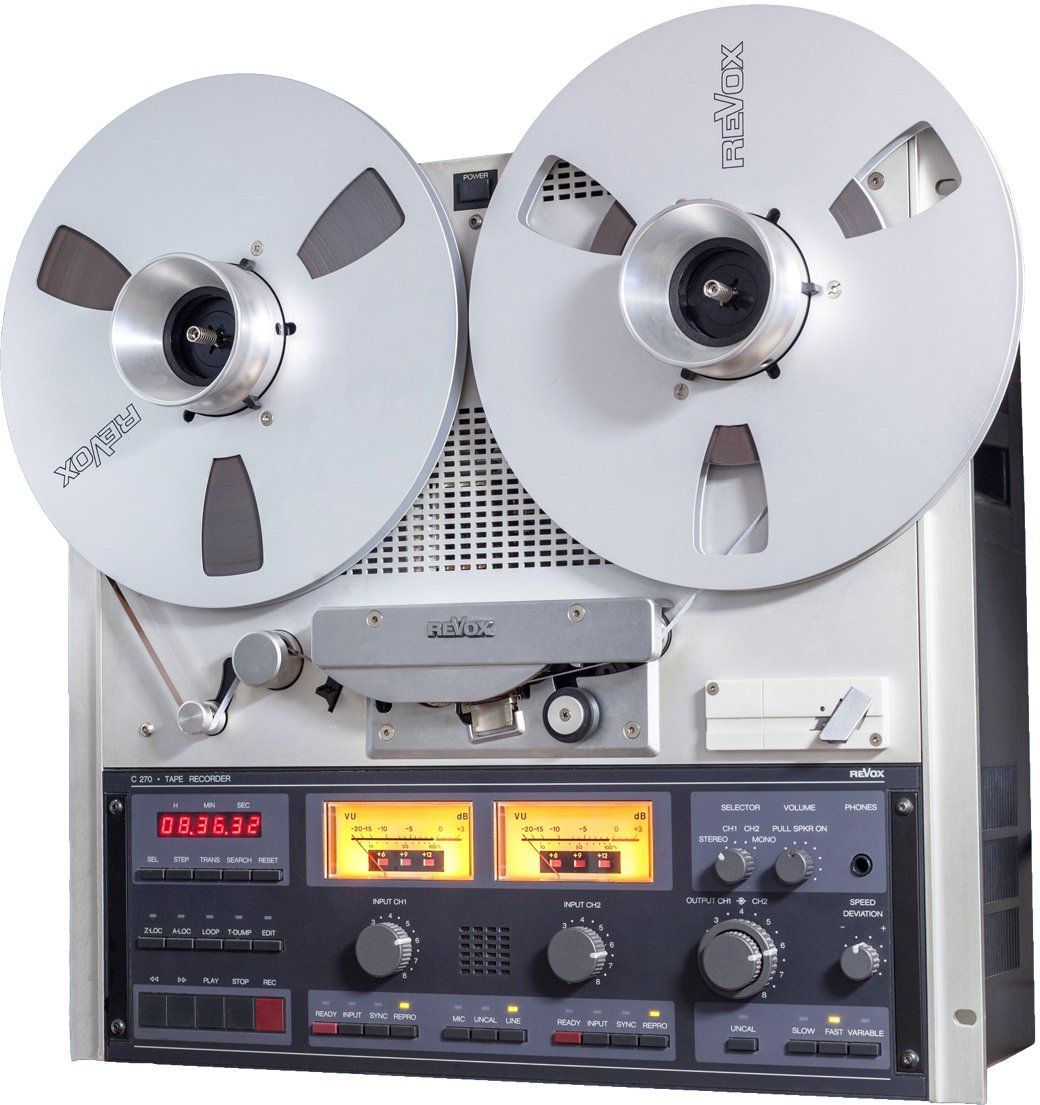Revox G36
Built from 1963 to 1967
The Revox G36 was the crowning achievement in the development of tape recorders in tube technology.
For the first time, coils with a diameter of 26.5 cm could be placed. The Revox F36 and predecessor could be operated with a maximum coil diameter of 25 cm. For the first time, a synchronous motor was used as tone motor in the Revox G36.
The Revox G36 had mechanical band end switches in two versions. Until device number 36,500 a microswitch was used. From device number 36.501 to 58.000 a feeler operated gold-plated wire contacts.
From serial number 58.001, the tape end was scanned optoelectrically. A light guide through the right pulley and the photoresistor in the stationary bolt was a strange design - more on that later!
The construction of the Revox G36 is already awesome. Ultra-long rods for the pots and rotary switches provide for short signal paths, the tubes in rank and file, the associated resistors and capacitors as well. The machine is not only fun in operation, the revision is thanks to the well thought-out design pure joy. And all that in 1963 - what a vintage :-D
Technical specifications
the Revox G36
Belt speeds:
9.5 cm/ s and 19 cm / s Syncron capstan engine
Flutter:
at 19 cm / s better +/- 0.1%,
at 9.5 cm / s better +/ - 0.15% hardly worse than a Revox A77 or B77
Frequency response over band:
40 Hz to 18 kHz + 2 dB to - 3 dB at 19 cm / s
40 Hz to 12 kHz + 2 dB to -3 dB at 9.5 cm / s, okay, the 12 kHz will hurt from today's perspective!
Max. Coil diameter:
26.5 cm (10.5 ")
Lead and rewind time:
120 sec. for 1000 m band
equalization:according to IEC
70 μs / 3180 μs at 19 cm / s
140 μs / 3180 μs at 9.5 cm / s
Signal to noise ratio:
2-track (k = 3%) 55 dB
4-track (k = 3%) 52 dB
distortion:
Max. 3% at full scale
Dynamics over band: (k = 3%)
2-track:
55 dB at 19 cm / s
53 dB at 9.5 cm / s
4-track:
52 dB at 19 cm / s
50 dB at 9.5 cm / s
Inputs per channel:
1. Microphone 3 mV Ri = 500 kΩ (max 600 mV)
2. Radio 50 mV Ri = 1 MΩ (max 10 V)
3. Diode 3 mV to 50 mV Ri = 47 kΩ (adjustable)
outputs:
2 cathode followers 2-track Ua = 0.7V
4-track Ua = 0.5V
1 speaker 5 Ω, 6 W
Built-in speaker:
21 cm diameter, can be switched off
tubes
:
4 x ECC81, 1 x ECC 82, 5 x ECC83, 2 x ECL86
Semiconductor insertion:
2 transistors, 5 silicon diodes, 3 selector rectifiers
Power supply:
110, 125, 145, 220 and 240V, 50Hz
power consumption:
about 120 VA
Mass:
20kg
Dimensions:
Suitcase: 47.7 x 34.1 x 29.5 cm
Chassis: 54.5 x 39.5 x 27.0 cm with 26.5 cm coils
Details
to Revox G36
glowing passion
The ratio of the tubes to the transistors or better semiconductors, is similar to that of the circuit board to the compact disc.
Everyone knows, the tube distorts more, has more distortion - and yet, the tubes sound better.
Everyone knows that the CD has the better technical characteristics - and yet the record sounds better with all its disadvantages!
Rocker
Two pushbuttons rotate the contacts of a rotary switch level. This allows you to select speeds of 9.5 cm / sec and 19 cm / sec or set channels 1, 2 or 1 and 2. In the photo you can still see the long brass tubes that operate the rotary switch and, as in the Revox A77, inside the rods of the pots lead - just great!
Potis and switches
At the end of the brass tubes are the rotary switches and the potentiometers of the Revox G36. This saves signal path and minimizes crosstalk. Especially since the resistors in the tube technology are very high-impedance, but the capacities are smaller and finer. Has all the pros and cons!
more Revox tape recorders




